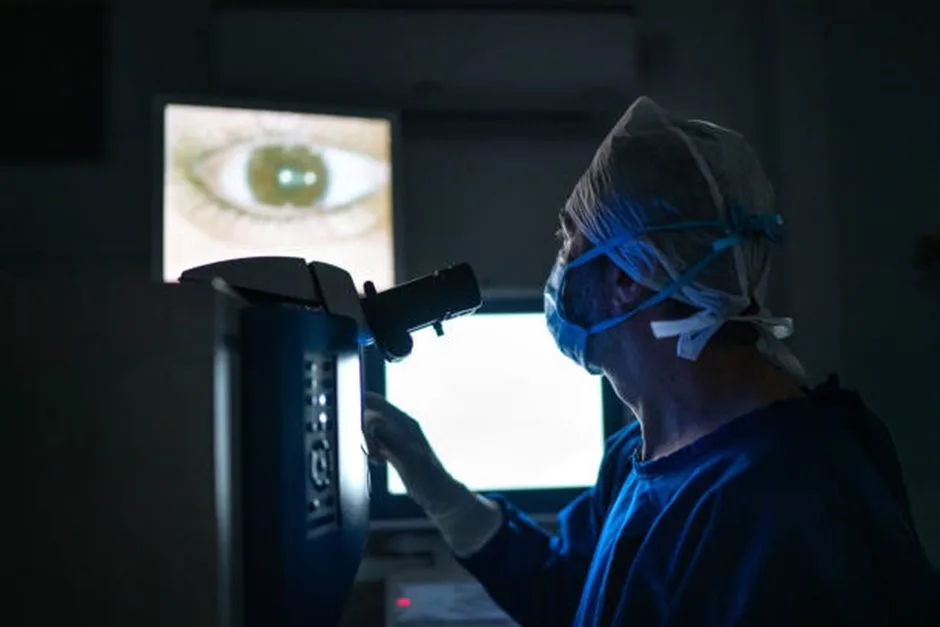Keratoconus affects thousands of people each year, causing the cornea to gradually thin and bulge into a cone-like shape. Many patients don’t realize their vision problems stem from this progressive condition until significant changes occur. Early detection through comprehensive eye examinations can dramatically alter the course of treatment and preserve long-term vision quality for those affected.
When you visit a qualified Northridge optometrist for regular checkups, subtle corneal changes can be detected years before symptoms become noticeable. Advanced diagnostic equipment allows eye care professionals to identify keratoconus in its earliest stages when treatment options remain most effective. This proactive approach often prevents the need for more invasive procedures later in life.
Understanding Keratoconus Development
Progressive Corneal Thinning: The condition typically begins during teenage years or early twenties, though some cases develop later in life. The cornea gradually loses its structural integrity, causing it to weaken and protrude outward. This change creates irregular astigmatism that standard glasses or contact lenses cannot fully correct.
Early Warning Signs: Patients often experience frequent prescription changes, increased light sensitivity, and difficulty with night vision. Some notice halos around lights or find that their vision seems cloudy even with corrected lenses. These symptoms can be subtle at first, making professional evaluation essential for proper diagnosis.
Advanced Diagnostic Technology
Corneal Topography Mapping: Modern optometry practices use specialized equipment to create detailed maps of corneal curvature and thickness. These measurements reveal even minor irregularities that might indicate early keratoconus development. The technology provides precise data that helps determine the most appropriate treatment approach for each individual case.
Digital Imaging Systems: High-resolution cameras capture detailed images of the eye’s internal structures, allowing for thorough examination of corneal health. These images can be compared over time to track any changes in corneal shape or thickness. Early detection through these methods often leads to better treatment outcomes and preservation of natural vision.
Treatment Options in Early Stages
Corneal Cross-Linking Benefits: When keratoconus is caught early, corneal cross-linking procedures can strengthen the corneal tissue and halt disease progression. This treatment uses riboflavin drops and controlled UV light to create new bonds within the cornea. The procedure is most effective when performed before significant corneal thinning occurs.
Specialty Contact Lens Options: Various contact lens designs can provide excellent vision correction for keratoconus patients when fitted properly by experienced practitioners. Options include:
- Scleral lenses that vault over the cornea and rest on the white part of the eye.
- Hybrid lenses combine rigid centers with soft outer edges for comfort.
- Custom soft lenses designed specifically for irregular corneal shapes.
- Rigid gas permeable lenses that create a smooth optical surface.
Ortho-K Treatment Possibilities: Some early-stage keratoconus patients benefit from overnight orthokeratology lenses that gently reshape the cornea during sleep. This approach can provide clear daytime vision without the need for glasses or daytime contact lenses. The treatment requires careful monitoring and may not be suitable for all keratoconus cases.
Consequences of Delayed Detection
Limited Treatment Effectiveness: Advanced keratoconus cases have fewer treatment options available, and procedures become more complex as the condition progresses. Corneal transplants may become necessary when other treatments are no longer viable. These surgical procedures carry higher risks and longer recovery times compared to early intervention methods.
Vision Quality Impact: Patients who delay seeking treatment often experience significant vision deterioration that affects their daily activities and quality of life. Driving at night becomes difficult or impossible, and reading or computer work may require special accommodations. Professional and educational opportunities can be limited when vision problems remain untreated.
Long-Term Vision Preservation
Monitoring Disease Progression: Regular eye examinations allow optometrists to track changes in corneal shape and adjust treatment plans accordingly. Early intervention can slow or stop keratoconus progression in many cases. Patients who receive prompt treatment often maintain functional vision throughout their lives without requiring surgical intervention.
Lifestyle Considerations: People with keratoconus need to avoid eye rubbing, which can accelerate corneal thinning and worsen the condition. Proper management of allergies and dry eyes also plays a role in maintaining corneal health. These lifestyle modifications are most effective when implemented early in the disease process.
Conclusion
Early optometric care makes a significant difference in keratoconus outcomes by enabling timely detection and intervention before irreversible corneal changes occur. Regular comprehensive eye examinations can identify subtle corneal irregularities years before symptoms become apparent to patients. The availability of advanced treatment options decreases as the condition progresses, making early detection crucial for preserving long-term vision quality and avoiding more invasive procedures.
Don’t wait for vision problems to become severe before seeking professional eye care. Schedule a comprehensive examination today to protect your vision for years to come.
READ MORE : Your High School Hero Jacket is Back







